Recent Articles
Popular Makes
Body Types
2020 BMW 530e Road Test and Review
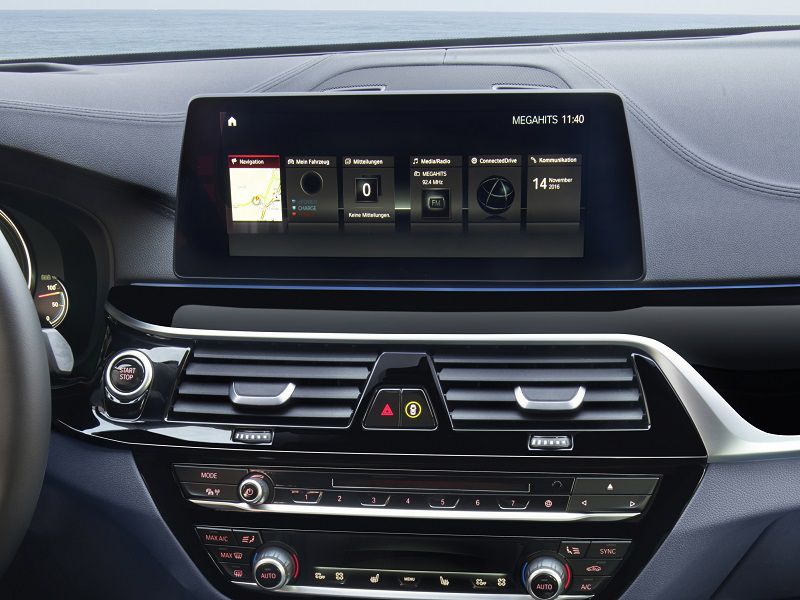
2020 BMW 530e Interior Infotainment ・ Photo by BMW
For the new model year, BMW has made a few changes to the plug-in hybrid version of its popular 5 Series sports luxury sedan. For starters, the 2020 BMW 530e PHEV has a new name. It used to be called the 530e iPerformance. PHEV stands for Plug-in Hybrid Electric Vehicle. BMW has also raised the sedan's price by $500, but more importantly, it has increased the size of its battery pack from 9.2 kWh to 12 kWh.
BMW is best known for its sports sedans and high-performance M cars like the M3 and M5, but the German luxury automaker is also a serious player in the global business of hybrids. Over the last half-decade, BMW has created a full line up of electrified cars and SUVs, including its $150,000 i8 supercar and hybrid versions of its more mainstream models. The 2020 BMW 530e PHEV mid-size sedan competes with the Lexus ES 300h hybrid and pure electric sedans like the Tesla Model S and Model 3.
More Affordable Than a Tesla Model S
The 2030 BMW 530e is built in Germany and sits in the middle of BMW extensive 5 Series line up between the 530i and the 540i. Prices start at $54,895, including $995 for destination, for the rear-wheel drive model. BMW’s xDrive all-wheel drive system is offered for an additional $3,000.
That’s quite a value when you consider that the 530i costs the same. It’s also about $16,000 less than the base price of the all-wheel drive Tesla Model S long-range model, which is about the same size as the 530e. Inside, the BMW buyers get standard navigation with a massive 10.2-inch touchscreen, a sunroof, heated front sport seats, wood trim, a configurable digital instrument cluster, and dual-zone automatic climate control. Seat comfort is exceptional, and the 5 Series' interior is richly appointed and well laid out.
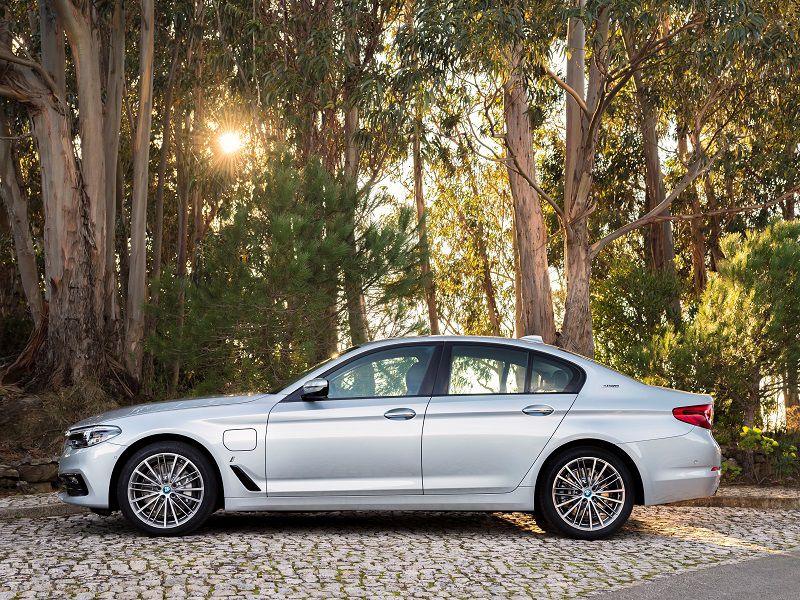
Photo by BMW
Hybrid System Delivers a Combined 248 Horsepower
Getting the 2020 530e down the road is BMW’s plug-in eDrive system, which combines a turbocharged and direct-injected 2.0-liter four-cylinder gas engine with an electric motor and a small lithium-ion battery pack mounted behind the rear seat. A similar powertrain is used in the larger 2019 745e, but for 2020 that model has been updated to an inline 3.0-liter six-cylinder engine with more power.
In the 530e sedan, the 2.0-liter engine is rated at 180 horsepower but the electric motor adds 111 hp, providing a combined output of 248 hp. That’s the same amount of power as you get in a 530i, and BMW says both sedans hit 60 mph in just 5.9 seconds. BMW’s clever engineers have also placed the 530e’s electric motor upstream of the standard eight-speed automatic transmission so its gear ratios are used even in all-electric mode, giving the sedan the feel of a conventional gas-powered BMW sport sedan.
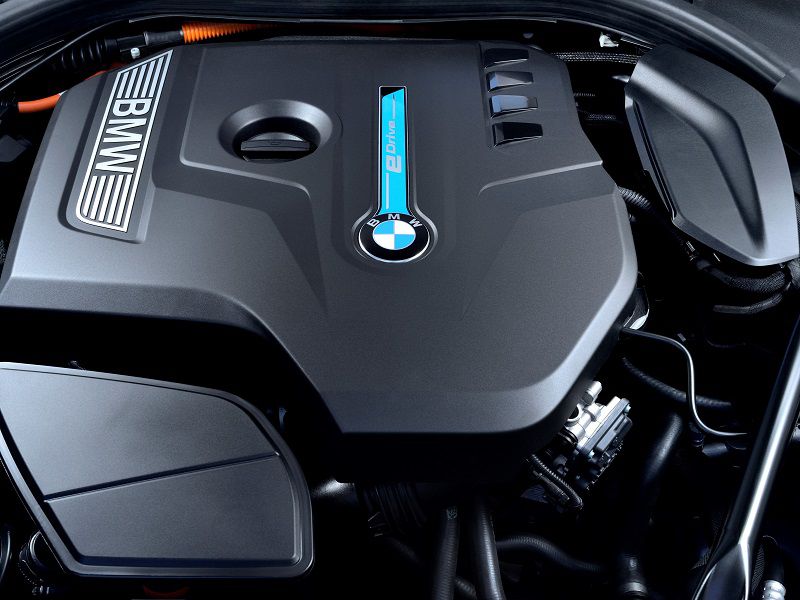
Photo by BMW
About 31 Miles of Pure Electric Range
Burning a combination of gasoline and electricity, the 2020 BMW 530e has a total range of about 400 miles before needing to be either recharged or gassed up. This gives the 530e the ability to be driven great distances without the need to stop for hours and charge its batteries. You can just fill its gas tank like you would in any other 5 Series.
Floor its accelerator and the BMW’s 2.0-liter gas engine turns on to add power, but the turbo engine’s operation is so smooth you rarely feel the transition. In normal driving, the engine turns itself on and off constantly, saving fuel and adding power. If your daily driving habits are short enough and you’re not too heavy on the BMW’s throttle, its gasoline engine will remain off all the time, allowing the 530e to function as a pure electric vehicle: smooth, silent, and emissions-free. The sedan can travel about 30 miles on electric power alone up to speeds of 87 mph. This matches the performance of the more expensive 745e, though the considerably more affordable base-model Tesla Model 3 all-electric car has a range of about 240 miles.

Photo by BMW
Recharges in Just Three Hours
Charging this BMW is as easy as plugging in your laptop. And because its battery pack isn’t large like a Tesla's, it doesn’t take very long to juice up. The BMW’s 12-kWh lithium-ion battery pack can be charged in under five hours on a standard 110-volt wall socket and approximately three hours using a 220v charger. We charged our test car overnight without any issues.
Its charge port is located on its left front fender and looks much like its traditional gas filler door, which is still located its right rear quarter panel. The additional port is nicely integrated and doesn’t spoil the 5 Series lines, but the lack of symmetry between the left and right side of the car may bother some buyers.
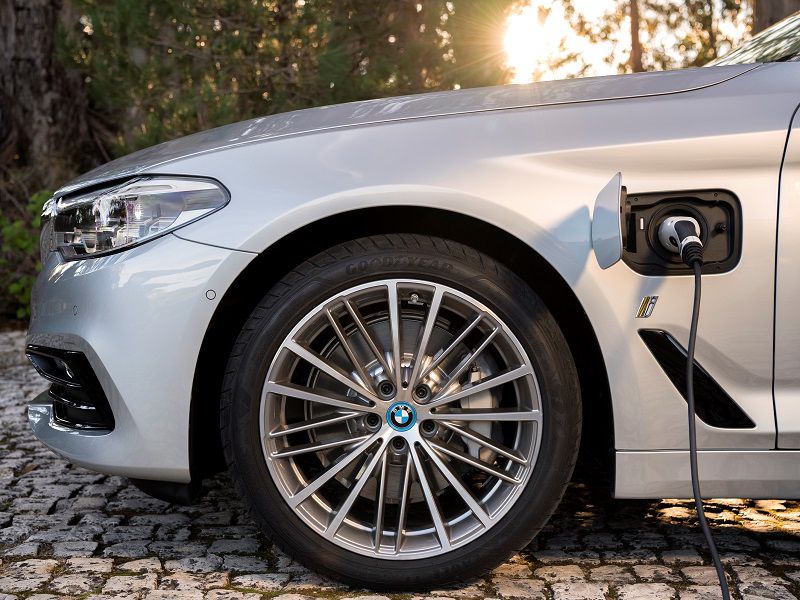
Photo by BMW
Three Operating Modes for the Driver
On the road, the BMW’s complex hybrid system is basically two powertrains continuously working together to get you down the road, but you’d never know it from behind the wheel. Its operation is that smooth, that seamless. Most of the time, the 530e just feels like a conventional gas-powered luxury car. And that’s a good thing.
That said, the driver can control the interaction between the engine and electric motor by using the eDrive button on the BMW’s console, and there are several settings. In Auto eDrive mode, the sedan’s computers optimize fuel efficiency and power delivery depending on many data points including speed, road conditions, and your driving style. Max eDrive is our favorite. It turns the 530e into an EV, using electric power only, but the gas engine will turn on if you press the throttle through a detent in its travel. Battery Control mode saves the battery charge for later and even charges the batteries as you drive.
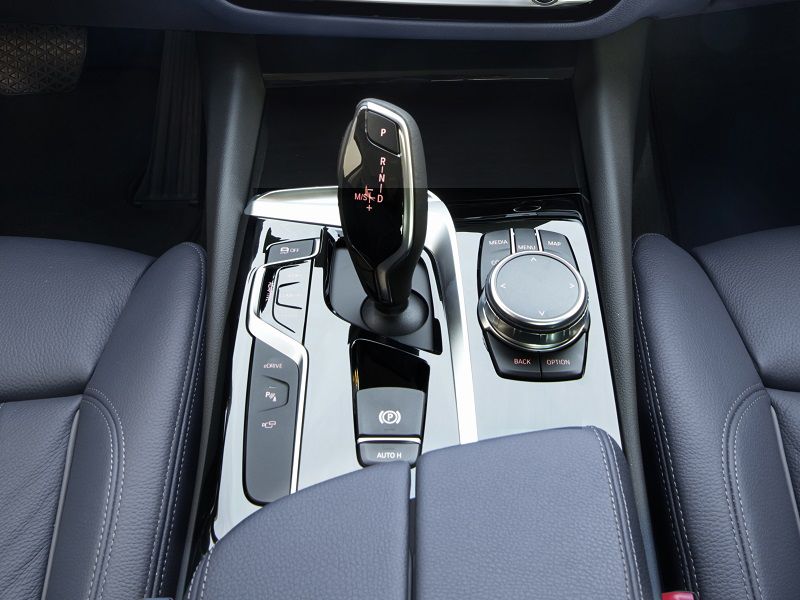
Photo by BMW
Fun to Drive, Like a BMW Should Be
BMW’s Driving Dynamics Control is also standard and allows the driver to choose among three settings: Comfort, Sport, and the default setting, Eco Pro. Each driving mode changes the readiness and involvement of the gas engine. For instance, in Sport the engine is always on, adding power, which makes the 530e quite fun to drive. Paddle shifters are also standard, and the sedan’s eight-speed automatic transmission matches revs on the downshifts just as it does in BMW’s high-performance M5.
The hybrid system also harnesses the energy created by the BMW’s brake system, sending it to the battery pack to help power the car down the road. All EVs and hybrids have similar systems, and some of them can intrude on the driving experience, giving the brake pedal a funky feel and slowing the car radically when you lift off the gas pedal. But this isn’t the case in the 530e. The BMW coasts like a gas-only 5 Series, and its brake pedal feels natural.
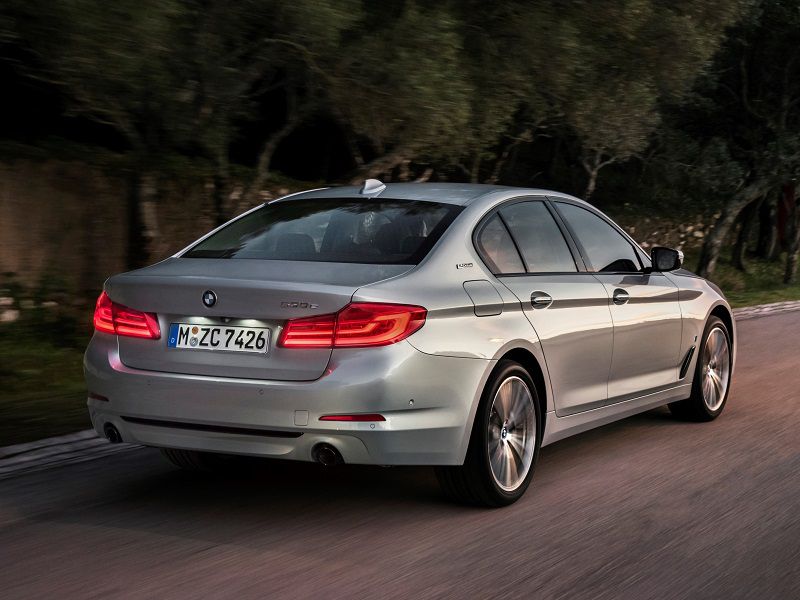
Photo by BMW
Quick, But Don’t Drag Race Any Teslas
With a 0-60 mph acceleration performance of 5.9 seconds, the 530e is quick off the line, but it’ll get its doors blown off by anyone of Elan Musk’s all-electric Teslas. It’s also a full second slower than a more powerful BMW 540i. We didn’t test the 530e’s top speed, which BMW says is 146 mph, but its passing power on the highway and high-speed stability are quite impressive.
Because of its hybrid system, the heavy 4,400-lb 530e weighs about 150 lbs more than a conventionally powered 5 Series. Fortunately, much of that additional weight is mounted in the rear of the car, which actually improves its balance and handling. It’s also mounted low, improving the sedan’s center of gravity. On a twisty mountain road, the 530e is entertaining and quick, with plenty of grip from its 18-inch tires. In the city and out on the interstate, its ride is comfortable.
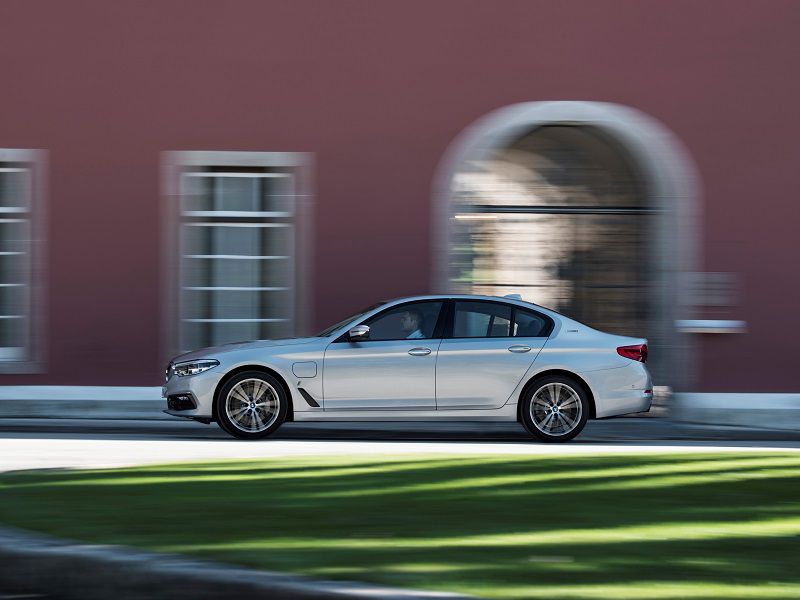
Photo by BMW
Smaller Trunk But Plenty of Safety
Unfortunately, the BMW’s battery pack has to go somewhere, and it intrudes on the sedan’s trunk space. Cargo volume drops from 18.7 cubic feet in the 530i to 14.5 cubic feet in the 530e. BMW has retained the 40/20/40 split-folding rear seat, which is rare in hybrid sedans, so a couple of golf bag will fit easily.
Run-flat tires, a forward collision warning with low-speed collision mitigation, active blind-spot detection, a lane-departure warning, and LED headlights are standard, and every safety system available on the standard 5 Series is offered on the 530e. This includes lane-change assist, an active lane change warning that will steer the vehicle for you to help avoid an accident, and adaptive cruise control. An adjustable suspension and an extensive parking assist package are also offered. The BMW 5 Series is rated a Top Safety Pick+ by the Insurance Institute for Highway Safety, which is the organization’s highest honor.
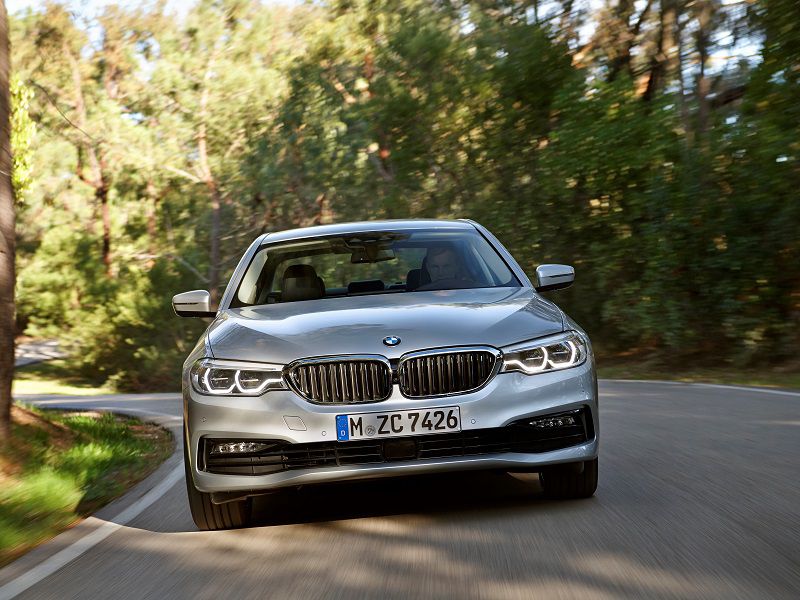
Photo by BMW
Final Thoughts
It seems the automotive world is all about electricity these days, but direct competitors for the 2020 BMW 530e plug-in hybrid remain few. Mercedes-Benz and Audi still don’t offer plug-in hybrid versions of the E-Class and A6, and Cadillac has already discontinued the plug-in hybrid version of its CT6 sedan. Porsche’s Panamera E-Hybrids are still around, and they’re wonderful driving machines with radically more power and performance than the BMW, but they also start at over $100,000.
If that’s beyond your budget, check out the 2020 BMW 530e PHEV. It’s comfortable and luxurious, and its performance is more than enough for most buyers.
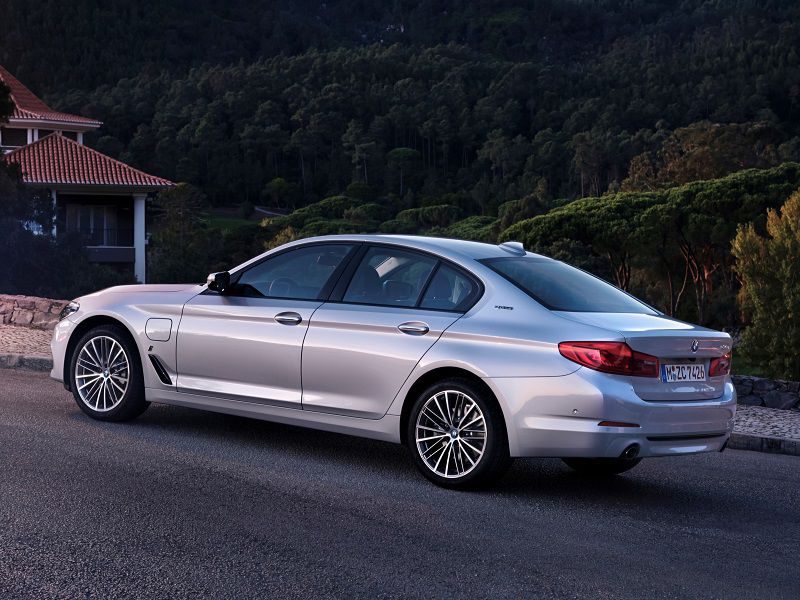
Photo by BMW